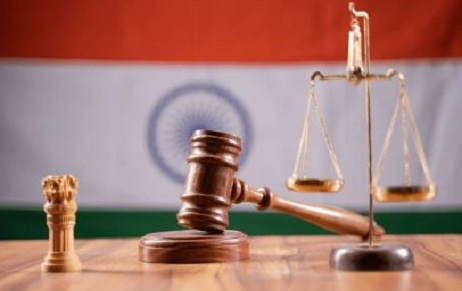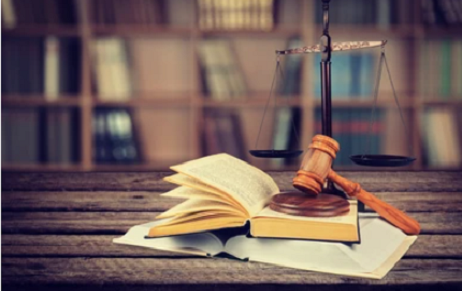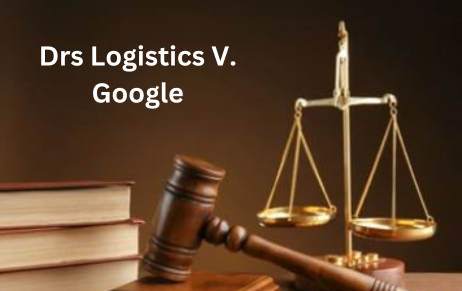ABSTRACT The project employs doctrinal research methods, i.e. secondary research which involves writing on basis…
Case Analysis: Alice Corp. V. Cls Bank (134 S. Ct. 2347 (2014))
Introduction
The Patent Statute of the US defines patentable subject matter as ‘any new and useful process, machine, manufacture, or composition of matter’ and any improvements.[1] But patent cannot be granted for laws of nature, natural phenomena or abstract ideas. In most of the countries, software cannot be patented unless it forms an element within a hardware or a system. However in June 2014, the US Supreme Court’s ruling in the Alice Corp. v. CLS Bank sent software patents down the rabbit hole. Essentially, the Court ruled that ‘implementing the abstract idea’ on a computer does not make it patentable.[2]
Background of the Case
The patent at issue in the instant case disclosed a computer- implemented scheme for mitigating “settlement risk” i.e the risk that only one party to a financial transaction will pay what it owes, by using a third- party intermediary.[3] Alice alleged that CLS Bank International and CLS Services Ltd. began using similar technology in 2002 and therefore CLS Bank had infringed Alice’s patents. CLS Bank filed suit against Alice in 2007, seeking a declaratory judgment that the claims of Alice were invalid. Alice counterclaimed infringement.
The District Court held that all the claims of Alice are not eligible to be patented because they are directed to the abstract idea of “employing a neutral intermediary to facilitate simultaneous exchange of obligations in order to minimize risk”.[4] A divided panel of the United States Court of Appeals for the Federal Circuit reversed the order holding that it was not ‘manifestly evident’ that Alice’s claims are directed to an abstract idea. In 2013, the members of the Federal Circuit vacated that decision and set the case for argument en banc and again found the claims too abstract in a decision that had the judges produce seven different opinions. The panel as a whole could not agree on a single standard to determine whether a computer- implemented invention is patent eligible or an ineligible abstract idea.
Held and Analysis
The Supreme Court in several years preceding the Alice decision decided three cases with the same issue of whether a claimed invention was patent eligible. The Court, to reach the decision in Alice referred to these cases. In Bilski, the Court held that a method for hedging commodity prices were ineligible.[5]A five-justice majority held that the claimed method was not eligible to be patented because it was an abstract idea but declined to rule that all business methods were ineligible. The Bilski Court offered negligible guidance on the test of determining whether a patent claim covered an abstract idea or was “too abstract”. On the other hand, while there was a sharp disagreement over the best ground on which the case must be decided, and a very narrow judgment, no justice disagreed that Bilski sought impermissibly to patent an abstract idea.[6]
Next in the case of Mayo, the Court invalidated a patent on a medical diagnostic as it very defensively covered the underlying natural principle or law of nature on which the test was based.[7] The Court basically held that a process that focuses upon use of a natural law must also contain other elements or combination of elements, sometime referred to as an ‘inventive concept’, sufficient to ensure that the patent in practice amounts to significantly more than a patent upon the natural law itself; it had to be sufficiently creative that it added something of substance to the natural law.[8] The case from which Mayo took the principle was Flook, which declared the rule n denying patent eligibility to an implementation of a mathematical algorithm.[9] A year after Mayo came the Myriad case wherein the issue was whether what was said to be a “product of nature” could be patented. The narrow holding was that DNA was not subject to patenting but cDNA because it is derived by seemingly more complex means; it is deemed not a product already found in nature.[10] The central and unique feature of the legal analysis of the Myriad and the Mayo case was that conventional or trivial expedients do not hold any weight in the patent- eligibility analysis.
While interpreting §101, the Alice Court began: “We must distinguish between patentsthat claim the building blocks of human ingenuity and those that integrate the building blocks into something more, thereby transforming them into a patent- eligible invention”.[11]Relying on Mayo, the Court opined in the Alice Case that an abstract idea could not be patented just because it is implemented on a computer; the software implementation of an escrow arrangement was not eligible for patent because it is merely an implementation of an abstract idea. Further, in cases where the Court has to decide whether a claim is patent eligible or not, the ‘Mayo Framework’ should be used. The Court explained that in order to determine whether a patent claimed a patent-ineligible abstract idea or instead a potentially patentable practical implementation of an idea, a ‘two-step’ analysis must be applied.
In the first Mayo step, the court must determine if the patent claim at hand contains an abstract idea. If not, the claim is potentially patentable subject to other requirements. If this essential stands fulfilled, the court must proceed to the next step. In the second step analysis, the Court must determine whether the patent embodies the inventive concept. This basically means that the implementation of the idea must not be generic, conventional or obvious if it is to qualify for a patent.
In brief the Court gave the judgment that “merely requiring generic computer implementation fails to transform [an] abstract idea into a patent eligible invention; mere recitation of a generic computer cannot transform a patent-ineligible abstract idea into a patent- eligible matter”[12]. Also, stating an abstract idea by adding the words ‘apply it’ is not enough for patent eligibility. [13]
Conclusion
Admittedly, the Supreme Court did not offer the clearest guidance on when a patent claims merely an abstract idea, but it did gave in the guidance that should help to invalidate some of the more egregious software which seek patent protection. Further the Court suggested that claiming a well understood, routine and conventional feature at a higher level of generality does not suffice for an ‘inventive concept’ but the Court provided meager guidance over those somewhat extreme examples. Moreover, the Court did not ‘labor to delimit the precise contours of the ‘abstract ideas’ category. Due to absence of clear guidance from the Supreme court, lower courts have at times faced difficulties in determining what constitutes an abstract idea and what an ‘inventive concept’ would be. The Alice Case has taken a heavy toll on patents for computer related inventions, particularly software patents. There remain a lot of unexpired patents that were granted before the Supreme Court’s decision in Alice. Therefore before filing a lawsuit for infringement of a software patent it is pertinent to scrutinize the claims in the light of the Alice case.
Author: Stuti Sinha, Interns at Khurana & Khurana, Advocates and IP Attorneys. In case of any queries please contact/write back to us at [email protected].
References:
[1] U.S. Code 35 §101.
[2] Daniel Nazer and Vera Ranieri, Bad Day for Bad Patents: Supreme Court Unanimously Strikes Down Abstract Software Patent, Electronic Frontier Foundation, June 19, 2014.
[3] Alice Corp. v. CLS Bank (134 S. Ct. 2347 (2014)).
[4] 768 F. Supp. 2d 221, 252 (DC 2011).
[5] Bilski v. Kappos, 561 U.S. 593 (2010).
[6] Richard H. Stern, Alice v CLS Bank: US Business Method and Software Patents marching towards oblivion,http://docs.law.gwu.edu/facweb/claw/Alice-EIPR.pdf
[7]Richard H. Stern, Bilski: A ‘Flipped’ Vote and then a Damp Squib (2011), https://www.researchgate.net/publication/318837752_Bilski_A_Flipped_Vote_and_then_a_Damp_Squib.
[8] Mayo v. Prometheus Labs 132 S.Ct.1289 (2012).
[9]Ibid at 1289 (citing Flook 437 U.S. 584).
[10] Association for Molecular Pathology v. Myriad Genetics Inc 133 S.Ct. 2107 (2013).
[11]Supra No. 3 at 2354 (2014).
[12]Ibid at 2358.
[13]Ibid at 2358.



